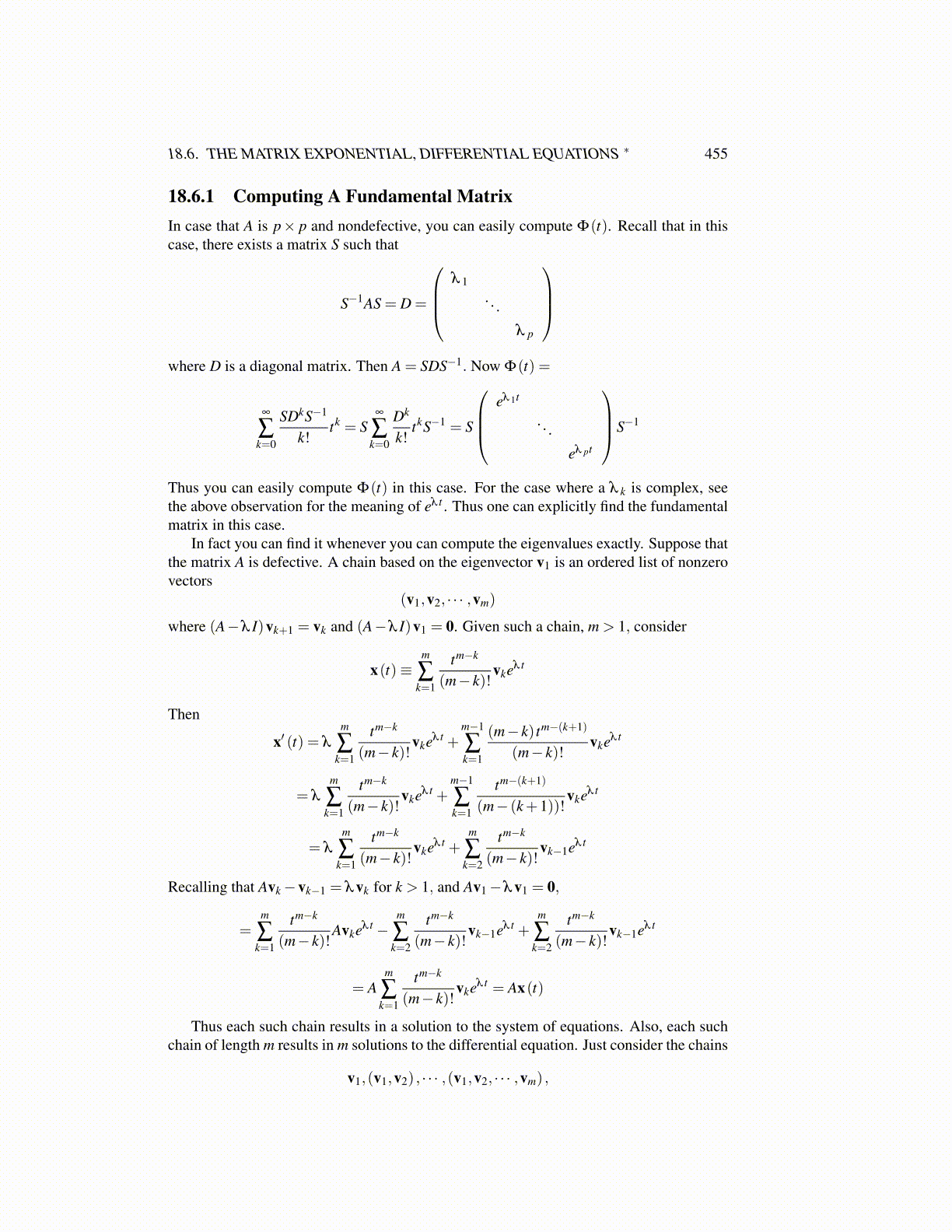
18.6. THE MATRIX EXPONENTIAL, DIFFERENTIAL EQUATIONS ∗ 455
18.6.1 Computing A Fundamental MatrixIn case that A is p× p and nondefective, you can easily compute Φ(t). Recall that in thiscase, there exists a matrix S such that
S−1AS = D =
λ 1
. . .
λ p
where D is a diagonal matrix. Then A = SDS−1. Now Φ(t) =
∞
∑k=0
SDkS−1
k!tk = S
∞
∑k=0
Dk
k!tkS−1 = S
eλ 1t
. . .
eλ pt
S−1
Thus you can easily compute Φ(t) in this case. For the case where a λ k is complex, seethe above observation for the meaning of eλ t . Thus one can explicitly find the fundamentalmatrix in this case.
In fact you can find it whenever you can compute the eigenvalues exactly. Suppose thatthe matrix A is defective. A chain based on the eigenvector v1 is an ordered list of nonzerovectors
(v1,v2, · · · ,vm)
where (A−λ I)vk+1 = vk and (A−λ I)v1 = 0. Given such a chain, m > 1, consider
x(t)≡m
∑k=1
tm−k
(m− k)!vkeλ t
Then
x′ (t) = λ
m
∑k=1
tm−k
(m− k)!vkeλ t +
m−1
∑k=1
(m− k) tm−(k+1)
(m− k)!vkeλ t
= λ
m
∑k=1
tm−k
(m− k)!vkeλ t +
m−1
∑k=1
tm−(k+1)
(m− (k+1))!vkeλ t
= λ
m
∑k=1
tm−k
(m− k)!vkeλ t +
m
∑k=2
tm−k
(m− k)!vk−1eλ t
Recalling that Avk−vk−1 = λvk for k > 1, and Av1−λv1 = 0,
=m
∑k=1
tm−k
(m− k)!Avkeλ t −
m
∑k=2
tm−k
(m− k)!vk−1eλ t +
m
∑k=2
tm−k
(m− k)!vk−1eλ t
= Am
∑k=1
tm−k
(m− k)!vkeλ t = Ax(t)
Thus each such chain results in a solution to the system of equations. Also, each suchchain of length m results in m solutions to the differential equation. Just consider the chains
v1,(v1,v2) , · · · ,(v1,v2, · · · ,vm) ,